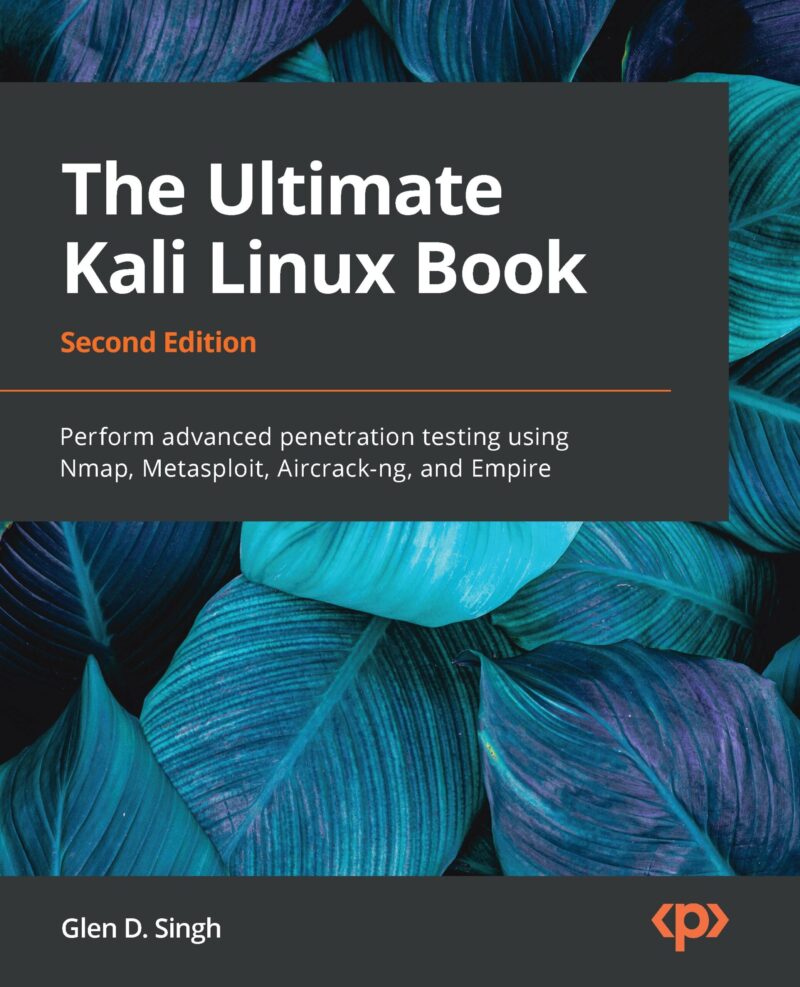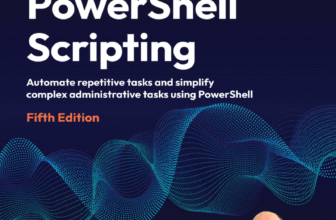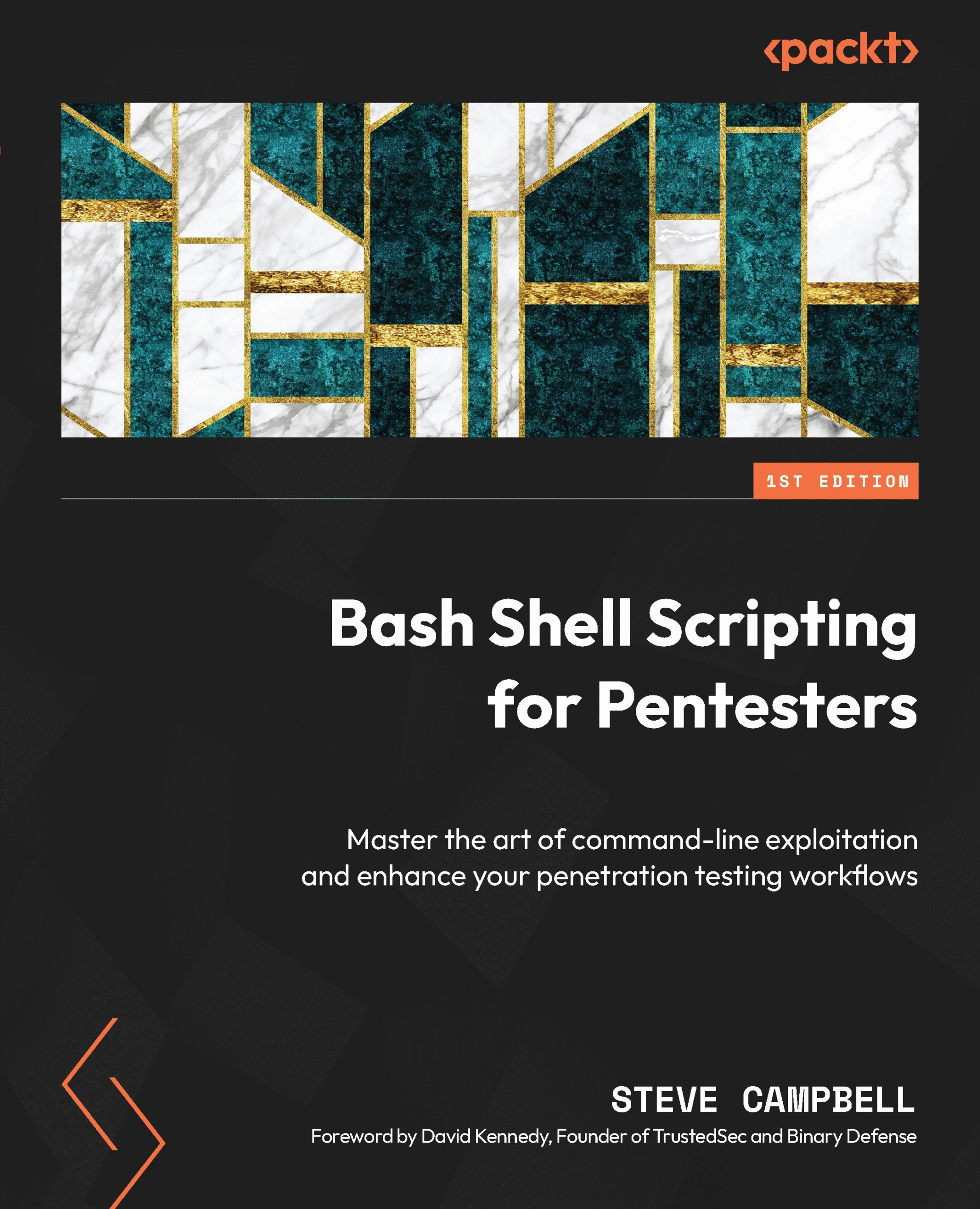The Ultimate Kali Linux Book: Master Advanced Penetration Testing with Real-World Kali Linux Techniques
Introduction
Kali Linux is no longer a “nice-to-know” tool – it’s the practical backbone of modern penetration testing and red-team operations. If you want to move beyond tutorials and YouTube demos into real, repeatable, enterprise-grade offensive security, The Ultimate Kali Linux Book (Second Edition) by Glen D. Singh is built to fast-track you. This book goes beyond a tool-by-tool reference: it teaches the reasoning, lab setup, and real-world workflows that ethical hackers and security engineers use when assessing and exploiting networks.
Why this book matters right now: defenders and attackers alike are operating in increasingly complex environments (Active Directory, segmented enterprise wireless, cloud misconfigurations). A book that ties Kali’s toolset to real-world attack paths, from reconnaissance to persistence and C2, gives you the mental model to both simulate attacks and harden environments effectively.
Who should read it?
- Students learning cybersecurity fundamentals
- Junior-to-mid-level pentesters who want to graduate from toy labs into enterprise scenarios
- Blue-team engineers who want to understand attacker playbooks
- Security managers that need to evaluate team capability and training paths.
Key takeaways (high level)
- Build a realistic, isolated pentesting lab and practice safely.
- Use Kali’s core tools (Nmap, Metasploit, Aircrack-ng, Empire) in coherent attack flows.
- Compromise and understand enterprise targets (Active Directory, wireless, web apps).
- Set up and manage C2 and post-exploitation operations responsibly.
- Learn defensive controls by studying offensive techniques.
This review/article will expand every section you requested, detailed book data, chapter breakdowns, real-world applications, in-depth strengths/weaknesses, and practical next steps so your readers get absolute value.
About the Author
The Ultimate Kali Linux Book: Perform Advanced Penetration Testing Using Nmap, Metasploit, Aircrack-ng, and Empire (Second Edition) is an in-depth, lab-driven guide that walks readers through the full lifecycle of a penetration test using Kali Linux. Rather than presenting an isolated tool at a time, Glen D. Singh organizes content around realistic scenarios: building a lab, enumerating environments, discovering vulnerabilities, exploiting trust boundaries (especially Active Directory), establishing Command & Control (C2) channels, and performing advanced wireless and web app attacks. The second edition updates and expands enterprise-focused content and modern attack techniques so readers can practice against realistic target setups. [Packt]
This book’s practical orientation is particularly relevant in 2024–2025 where attackers increasingly combine social engineering, cloud misconfigurations, and AD abuse to escalate privileges. Singh bridges academic concepts and practical exploitation with step-by-step labs, making it useful both as a textbook and as a practitioner’s handbook. The publisher confirms that the print or Kindle purchase includes a free eBook (PDF) copy, useful for those who want a searchable digital reference while practicing in their lab.
Book Details (Quick Reference)
| Field | Information |
|---|---|
| Title | The Ultimate Kali Linux Book: Perform Advanced Penetration Testing Using Nmap, Metasploit, Aircrack-ng, and Empire |
| Author | Glen D. Singh |
| Publisher | Packt Publishing |
| Publication year | 2022 (2nd Edition) |
| Edition | Second Edition |
| Pages | 742 pages |
| Print ISBN | 9781801818933 |
| eText ISBN(s) | 9781801819015 (eText variants) |
| Formats | Print (paperback), eBook (PDF/EPUB/MOBI), eText |
| File size | Varies by format / edition |
| Language | English |
Sources: publisher product page and eText vendors. Packt
About the Author – Glen D. Singh
Professional background & credibility
Glen D. Singh is a cybersecurity instructor, consultant, and author with multiple books and industry trainings to his name. He has worked extensively on offensive security training, net-ops fundamentals, and enterprise defensive strategies, and frequently publishes tutorials, interviews, and training content around penetration testing and network security. His public profile (author site, LinkedIn, Packt interview) shows a mix of academic qualifications (MSc in Cybersecurity reported on public profiles), professional certifications, and years teaching and conducting labs, which are directly reflected in the pedagogical style of this book.
Author’s Website: glensingh.net
Author’s LinkedIn: Glen Singh
Why He’s Credible:
- Several published cybersecurity titles and consistent training work. Goodreads
- Direct engagement with Packt (author interview and Packt product pages) and hands-on lab emphasis. Packt Partnerships
Other works / further reading
“Other Books will be mentioned as soon as we upload it”
Table of Contents
The book is organized into four major sections (22 chapters total). Below is a clean, navigable layout with short notes on what each section teaches and why it matters.
Section 1: Getting Started with Penetration Testing
Ch. 1 — Introduction to Ethical Hacking
Foundational concepts: threat actors, attack motivations, kill chain, ethics, and testing phases. This chapter frames everything that follows, teaching you to think like an attacker while staying legal and ethical.
Ch. 2 — Building a Penetration Testing Lab
Hands-on lab design: hypervisors, isolated networks, target images (Metasploitable), and realistic network topologies to practice safely.
Ch. 3 — Setting Up for Advanced Hacking Techniques
AD red team lab setup and wireless labs — prepares readers for enterprise and wireless scenarios used in later chapters.
Section 2: Reconnaissance and Network Penetration Testing
Ch. 4 — Reconnaissance and Footprinting
Passive intel collection, OSINT workflow, and external surface mapping — how to gather non-intrusive data about targets.
Ch. 5 — Exploring Active Information Gathering
Active scanning, Google dorking, DNS enumeration, subdomain discovery, and early host fingerprinting — the start of an attack timeline.
Ch. 6 — Performing Vulnerability Assessments
Using Nessus, Nmap scripting, Greenbone, and web scanners to prioritize attack surface and understand CVE context.
Ch. 7 — Understanding Network Penetration Testing
Internal vs external tests, shells (bind/reverse), antimalware considerations, and wireless adapter handling.
Ch. 8 — Performing Network Penetration Testing
Target discovery, service enumeration, password attacks, and exploiting network services.
Section 3: Red Teaming Techniques
Ch. 9 — Advanced Network Penetration Testing — Post Exploitation
Meterpreter workflows, data exfiltration strategies, MITM, sniffing, and persistence mechanics.
Ch. 10 — Working with Active Directory Attacks
AD concepts, enumeration, trust exploitation and how typical enterprise misconfigurations are abused.
Ch. 11 — Advanced Active Directory Attacks
Kerberos abuse (AS-REP, Kerberoast), lateral movement, domain dominance and persistence strategies.
Ch. 12 — Delving into Command and Control Tactics
C2 architecture, Empire usage, and operational security for remote control and persistence. Packt
Ch. 13 — Advanced Wireless Penetration Testing
WPA/WPA2 compromises, APless attacks, enterprise wireless exploitation, and emerging WPA3 concerns and mitigations.
Section 4: Social Engineering & Web Application Attacks
Ch. 14 — Client-Side Attacks — Social Engineering
Planning human-targeted attacks, common deception techniques, and how to defend organizational culture.
Ch. 15 — Understanding Website Application Security
OWASP Top 10 coverage, Burp Suite & FoxyProxy setup, injection and access control issues.
Ch. 16 — Advanced Website Penetration Testing
Server-side request forgery, automated SQLi strategy, XSS, and client-side attack automation.
Ch. 17 — Best Practices for the Real World
Penetration testing checklists, reporting, toolkits, and next steps for professional growth.
(You Can Check out the remaining Chapter Yourself 😉)
Key Highlights & Actionable Insights
- Reporting & remediation mindset — The final chapters emphasize clear findings and remediation guidance — a must for client work and internal security improvements.
- Lab-first learning — This book forces you to create an isolated, realistic environment. Practicing on disposable VMs (Metasploitable, simulated AD) lets you recreate enterprise misconfigurations and safely reproduce complex attack chains. Real-world application: use the lab to validate patching strategies or simulate attacker lateral movement before a real engagement.
- Attack flows over tool memorization — Instead of treating Nmap, Metasploit, or Empire as disconnected tools, the book ties them into end-to-end flows: discovery → access → persistence → exfiltration. Real-world: run full red-team simulations that mirror TTPs used in reported incidents.
- Enterprise focus — Active Directory & C2 — AD exploitation is taught in depth, including Kerberos abuses and domain persistence. Real-world: security teams can translate these lessons into detection rules and group policy hardening.
- Wireless and emerging tech — The book includes contemporary wireless attack modes and discusses WPA3 attack surfaces. Real-world: use these sections to validate wireless segmentation, enterprise certificates, and network access controls.
- Social engineering integration — Technical exploits are combined with human-targeted attack planning. Real-world: tabletop exercises with SOC, HR, and IT to close both technical and human vulnerabilities.
My Reviews — Strengths, Limitations & Ratings
Strengths
- Comprehensive scope: from basics to enterprise red-teaming (covers reconnaissance, exploitation, post-exploit, and reporting).
- Hands-on labs: step-by-step setups and tasks that encourage active learning.
- Enterprise relevance: AD, advanced wireless, and C2 content maps directly to the risk vectors organizations face. Packt
Limitations
- Steep learning curve: some chapters assume familiarity with Linux command line and networking basics. Beginners may need parallel foundational resources.
- Required discipline: the book is practice-heavy — readers who skim will miss the operational mindset the author intends.
- Tool churn: security tooling evolves fast; some auxiliary tool commands may be dated in a couple of years (but the conceptual attack flows remain valuable).
Star ratings (out of 5)
- Content depth: ⭐⭐⭐⭐⭐
- Practicality (labs → real skill transfer): ⭐⭐⭐⭐⭐
- Readability (for mixed audiences): ⭐⭐⭐⭐☆
Who Should Read This Book?
- Students & learners who want a structured path from basics to advanced pentesting. (But pair the book with a Linux basics course if you’re brand new.)
- Junior-to-mid-level pentesters who want to move from box-by-box exploitation into enterprise-level engagements.
- Red-teamers who need practical C2 and AD exploitation techniques.
- Blue-teamers & SOC analysts who want attacker perspectives to build detection and response playbooks.
- IT/network admins who need to understand what attackers will attempt in order to prioritize configuration changes and compensating controls.
- Instructors & trainers assembling lab syllabi for offensive security courses.
Related resources / complementary books
- Metasploit: The Penetration Tester’s Guide — a deep dive into Metasploit workflows. [#]
- The Hacker Playbook 3 — practical red-team playbooks and real engagements. [#]
- Kali Linux Revealed — foundational Kali OS and customization. [#]
- Practical Malware Analysis — for deeper post-exploitation and malware understanding. [#]
- Active Directory Attacks and Defense (specialized AD security guide). [#]
Frequently Asked Questions
Q: Who is this book best suited for?
A: Students, pentesters, red-teamers, SOC analysts, and IT pros who want hands-on, lab-centric learning with an enterprise slant.
Q: Does it include practical examples and code?
A: Yes — the book contains step-by-step labs, commands, and examples for tools used in a pentest. Code and sample lab files are typically referenced in the book and online resources. Packt
Q: Where can I buy the official copy?
A: Primary retailer: Packt Publishing (product page). It’s also available through major booksellers and eText vendors. Packt
Q: Will I need prior knowledge?
A: Helpful prior knowledge includes basic Linux command line, TCP/IP networking, and some familiarity with web concepts, but the book begins with foundational topics and lab setup to support learners.
Download
Free DownloadDownload — The Ultimate Kali Linux Book (PDF)
Format: PDF (eBook)
File size: varies by edition
Short disclaimer:
This download is presented for educational purposes only. Always support the author and publisher by purchasing the official edition if you find the material useful. Unauthorized distribution or piracy harms authors and the community.
Download the Code Used in this Book
Availability & How to use it
The book includes lab exercises and code snippets; many Packt books provide either an accompanying GitHub repo or downloadable project files linked from the publisher page. These resources let you spin up the exact targets and scripts discussed in the chapters and run through the exercises in your isolated lab. Confirm the repository or resource links in the book’s preface or the publisher’s product page. Packt
- Official GitHub / Repository: [Visit Github Repo]
Why use the code?
- Reproducibility: replicate attacker flows exactly as described.
- Learning by doing: change parameters, see outcomes, and learn tool internals.
- Build a training curriculum: instructors can adapt labs for workshops or courses.
In-Depth Expert Notes & Practical Reading Plan
If you want absolute value from this book, follow this guided study plan:
Weeks 1–2 — Foundations & Lab Build
- Read Sections 1–2. Build the lab (hypervisor + isolated AD + Metasploitable). Practice basic Nmap scans and OSINT tasks.
Weeks 3–4 — Service & Vulnerability Hunting
- Work through vulnerability scanning chapters. Practice Nessus/Greenbone and interpret CVSS scores. Convert findings into prioritized remediation tickets.
Weeks 5–7 — Exploitation & Post-Exploitation
- Follow post-exploit chapters: practice Meterpreter workflows, persistence, exfil techniques, and build a small C2 lab with Empire (use alerts and hardening counters to test detection).
Weeks 8–10 — AD & Wireless
- Deeply study AD chapters and Kerberos abuse labs. Also run wireless sections in a controlled environment with test APs.
Continuous — Detection & Reporting
- After each lab, write a one-page findings report and two SIEM detection rules (YARA/snort/Sigma) to translate offensive learnings into defensive controls.
This approach turns the book into a curriculum, not just a reference.
Conclusion
The Ultimate Kali Linux Book (Second Edition) is a rare blend of completeness and practicality. Its strength lies in teaching workflows and attacker thinking, not just individual tool commands. If you’re building a career in offensive security, need to perform credible red-team or penetration testing engagements, or want to help your organization anticipate real attack strategies, this book will become a staple reference in your library. The emphasis on enterprise scenarios, especially Active Directory exploitation, C2 operations, and wireless attacks, makes it particularly valuable for those operating in corporate environments.
That said, to squeeze maximum value you must practice deliberately: build the labs, reconstruct the attack flows, and translate each offensive step into a defensive control. If you do that, this book will both accelerate your technical skills and sharpen the judgment needed to design meaningful tests and defenses.
Was this article helpful?
Please leave a quick comment, submit recommendations and suggestions.
Share this review with your fellow tech enthusiasts, drop your thoughts in the comments, and don’t forget to follow us for more cybersecurity book reviews and guides!
Free Download








Thanks for your service
This book helped me alot..
Appreciated Your support! ❤ Keep visiting us, as we are just starting out, there are more free stuff on the way!